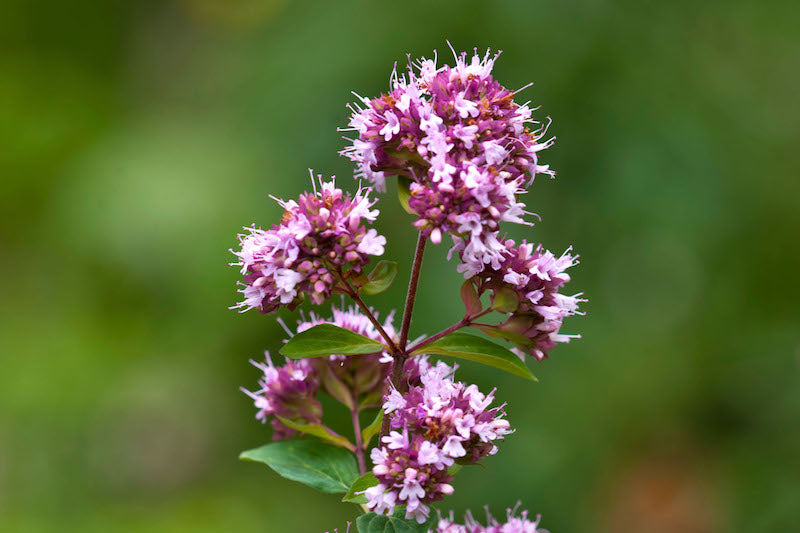Description
This plant is an herbaceous perennial that grows around 1 to 3 feet high.1 The upright purple-green stems are square-shaped and hairy.1 They are woody at the bottom and branch out higher up.1 The small leaves are ovate with a rounded base and acute apex, with a varied margin, pale underside, and most are pubescent.1 They are oppositely arranged, and have a hairy petiole attaching them to the stem.1 The small white to light pink or purple flowers grow in a corymb arrangement terminally from the leaf axil and have five lobes.1,4 The flower sepals are tubular with five teeth, slightly hairy, and green or burgundy colored.1 The overlapping bracts are dark purple in color.1 The seed are oval nutlets.1 The root is a rhizome that creeps horizontally.1
Origins & History
Oregano is indigenous to Europe and the Middle East but is widely distributed in Asia, Europe, northern Africa, and the former Soviet Union.1 Historically, the herb was used widely in ancient Greece, and this endemic plant is still popular in herbalism there to this day.1,5 This herb grows plentifully in limestone-rich soil with large amounts of calcium carbonate.5 The roots can be divided in the fall for propagation or the seeds can be sown in early spring in dry, mild weather.5
The botanical name of Origanum comes from the Greek oros and ganos, meaning mountain and joy; the feeling it would give to see the plant growing on the mountainside.5 The multiple flowers bloom throughout the summer.5
Oregano is also used extensively as an essential oil in the aromatherapy industry.1 The flowering tops have traditionally been used as a dye; purple on wool and reddish-brown on linen.5
This plant is heavily used in the food industry as one of the most prevalent culinary herbs.3,5 It is often confused with another culinary herb, marjoram (Origanum majorana), as they are related and very similar in appearance.1 Before hops were introduced in beer making, Oregano was a sought-after ingredient because of its preservation abilities and aromatics.5






























